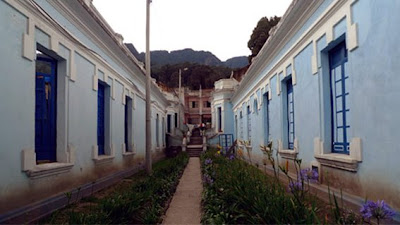
Time's arrived; Lore and I decided to start our on-site investigation to find locations to film last Thursday; today it was the night of San Per Mendoza, a market located right in the city centre that is visited by the campesinos [peasants]twice a week. Lore had already warned me of the incredible experience I was about to live... she wasn't playing it up.
At 2:00 am, we took a taxi and drove to the now almost empty streets only populated by street walkers, wanderers and people searching bin bags or just sitting around fires in waste lands that surround San Per Mendoza. It was a haunting ghostly scenario...
Under the twilight of the street lamps, we walked through the lorries parked towards the market. It was chilly and strangely silent...my heart was beating with excitement.
We walked inside a poorly lit and very humble tiled building, and there it was: on both sides of our path hundreds of heaps of herbs and plants of every imaginable kind: were above people sitting on the ground quietly and very still under their straw hats. My eyes scrolled through the hundred of herbs used for fragrance, for cooking, for decoration, for homoeopathic purposes...
Sudendly, we heard a voice: "Lorena!" and saw two men walking towards us with a welcoming smile in the faces. They hugged her and immediately I was introduced as the Spanish London-based artist who was making a project on Colombian food. Alirio and Juan are two campesinos from Mesa, a small rural town in the region of Cundinamarca about 62 kms South from Bogota who had come to sell the products they grow on their farm. They invited us to sit down at a humble table and have a tinto, a small black coffee.
Whereas Lore, Juan and Alirio were involved in a lively conversation about the last time she'd been at this amazing place, my eyes started looking around. From the corner of the small cafe where we were sitting, I could see the hectic movement of young men carrying wooden carts loaded with bunches of herbs and plants. Some people had already started coming in to buy herbs for their shops; some of them wearing ponchos and Panama hats. The owner of the cafe, Sra Cecilia, offered me another tinto and with a smile said: "Isn't it a wonderful place, Senor?" She could see my response in my eyes.






















.jpg)

















